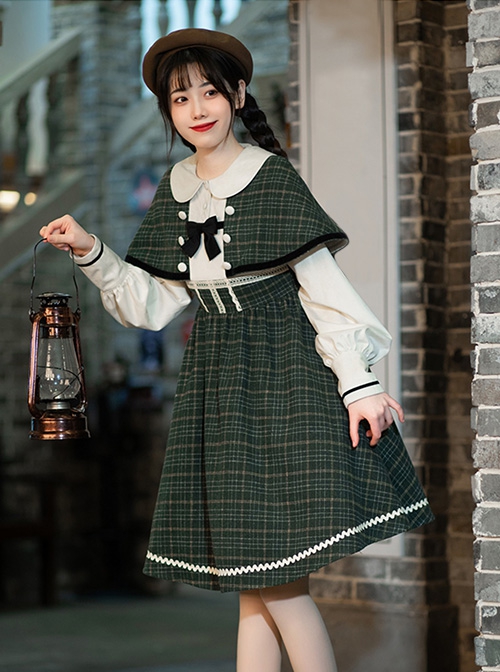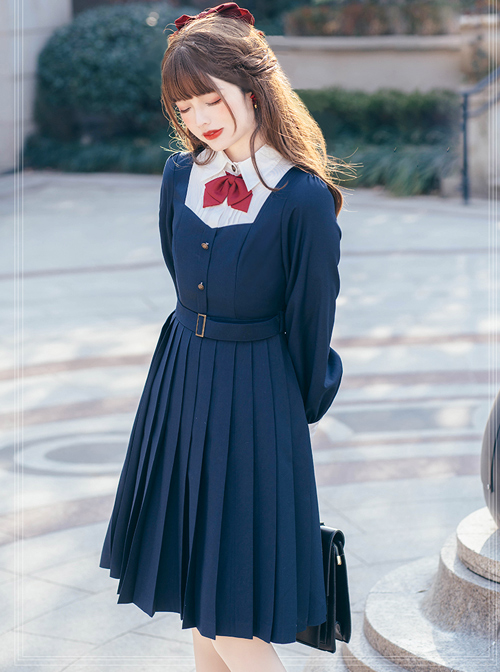How To Redefine Street Style: Lolita
What Is Lolita Fashion?
Lolita fashion is a unique and whimsical style that originated in Japan in the 1980s. It draws inspiration from the stunning aesthetics of both Victorian and Rococo fashion, combining elements of elegance, femininity, and childlike innocence. The name "Lolita" comes from Vladimir Nabokov's novel of the same name and leans into the idea of youthful charm and beauty.
Lolita fashion is characterized by its doll-like appearance, with voluminous skirts, petticoats, and intricate detailing. The style emphasizes modesty, with high necklines and long sleeves being common features.
There are several substyles within Lolita fashion, each with its own distinct characteristics. The term covers a range of styles from Sweet Lolita, known for its cute and playful elements to Gothic Lolita, featuring darker colors and a more mysterious overall aesthetic.
Lolita fashion has a strong sense of community, with enthusiasts coming together at events and communicating online to share their outfits, experiences, and love for the style. It has also expanded beyond its niche roots and has influenced street fashion, with Lolita elements often incorporated into everyday outfits for a touch of whimsy and individuality.
The History Of Lolita Fashion
The term "Lolita" was coined by Japanese fashion designer Takamasa Yoshizawa, who used it to describe a new fashion style that embodied elegance, femininity, and childlike innocence. These are all still common features of the evolved style today.
During its early years, Lolita fashion was primarily an underground movement. Enthusiasts would gather in Harajuku, Tokyo, wearing their intricately styled outfits and showcasing their individual interpretations of the style. In the 1990s, Lolita fashion gained more visibility and began to evolve into distinct substyles.
Lolita fashion gained international recognition in the early 2000s, thanks to the spread of Japanese pop culture and the development of online platforms. Online communities allowed Lolita enthusiasts from around the world to connect, share ideas, and discuss their love for the Lolita style.
Lolita fashion has influenced various aspects of popular culture, including music, art, and media. It has inspired numerous designers and has even made appearances on international runways. Despite its niche origins, Lolita fashion has carved a unique place in the fashion world, captivating individuals with its enchanting and nostalgic allure and undoubtedly influencing numerous other styles.
Lolita's Place In Street Fashion
Lolita fashion has solidified a place in the realm of streetwear and street style. What was once confined to a niche subculture has now expanded its influence on the broader fashion scene.
One of the reasons for Lolita's presence in street fashion is the versatility of its elements and variety in the application. Bows and delicate accessories, which are just a couple of the signature features of Lolita fashion, can be incorporated into various clothing pieces in a number of ways. Fashion-forward individuals have embraced this opportunity and added Lolita-inspired pieces into their looks, adding a touch of romance and whimsy to their street-style outfits.
In recent years, street fashion has become more eclectic and inclusive, embracing diverse aesthetics and influences. Lolita fashion has benefited from this trend, as its distinctive style and individualistic approach both align with the idea of self-expression in street fashion. By incorporating Lolita elements into their outfits, individuals can create unique and eye-catching looks that stand out from mainstream fashion trends.
Lolita Fashion and Different Styles
Chinese Style
There are a number of elements of Chinese style that lend themselves well to Lolita to create a captivating blend of cultural influences.
The Chinese-style Lolita dress combines the traditional cheongsam silhouette with Lolita-inspired details. The neckline, stitching and lace enhance the classic cheongsam design, while delicate camellia flower embroidery adds an exquisite touch.
This fusion of Chinese tradition and Lolita whimsy showcases just why this style is so versatile in its potential pairings.
British Style
Lolita elements are also often paired with traditional British fashion features. British-style Lolita fashion draws inspiration from classic looks like traditional British school uniforms and plaid to create a style that is unique, sophisticated and elegant.
Greek Style
The integration of Lolita elements into Greek style results in a captivating fusion of ancient elegance and Lolita whimsy.
Taking Greek elements like a lower neckline and lack of sleeves and pairing them with Lolita detailing creates potential for beautiful designs, like this Greek-style Lolita dress.
Warlord Style
The Warlord style showcases the versatility of Lolita fashion by blending it with military-inspired aesthetics.
Detailing and sharp collars mixed with the softness and femininity of Lolita make for some wonderful silhouettes and a striking look.
These military elements give the style an edgy and rebellious energy whilst the Lolita elements, such as bows and ruffles, add a whimsical and feminine touch. These, in combination, create a captivating fusion of contrasting styles.
Preppy Style
Lolita fashion has really made its mark on the preppy style.
Preppy-style Lolita draws inspiration from classic school uniforms, featuring pleated skirts and bow neckties.
These looks are both sophisticated and whimsical and combine the very best of both styles.
Preppy Lolita fashion is a very popular substyle of Lolita fashion and is a good example of its influence on more mainstream fashion.
Sailor Style
Sailor-style Lolita dresses embrace iconic naval aesthetics whilst easily blending feminine features.
The solid-color, vintage navy-style design, along with the stripe lapel and bowknot decorations, pays homage to classic sailor uniforms whilst the Lolita skirt and silhouette add a touch of femininity and flair.
Lolita Fashion Trends And Future Development Direction
Lolita fashion has evolved over the years, adapting to changing trends and expanding its influence. Whilst still rooted in its signature aesthetics, Lolita fashion has embraced various trends and incorporated elements from different styles, making it a dynamic and ever-evolving fashion subculture.
Looking towards the future, Lolita fashion is likely to continue its path of innovation and inclusivity. It’s a growing subculture that will likely continue to expand its reach globally, with enthusiasts from different countries and cultures incorporating their own unique influences into Lolita fashion.
The future of Lolita fashion may be even more diverse and exciting than it already is.






